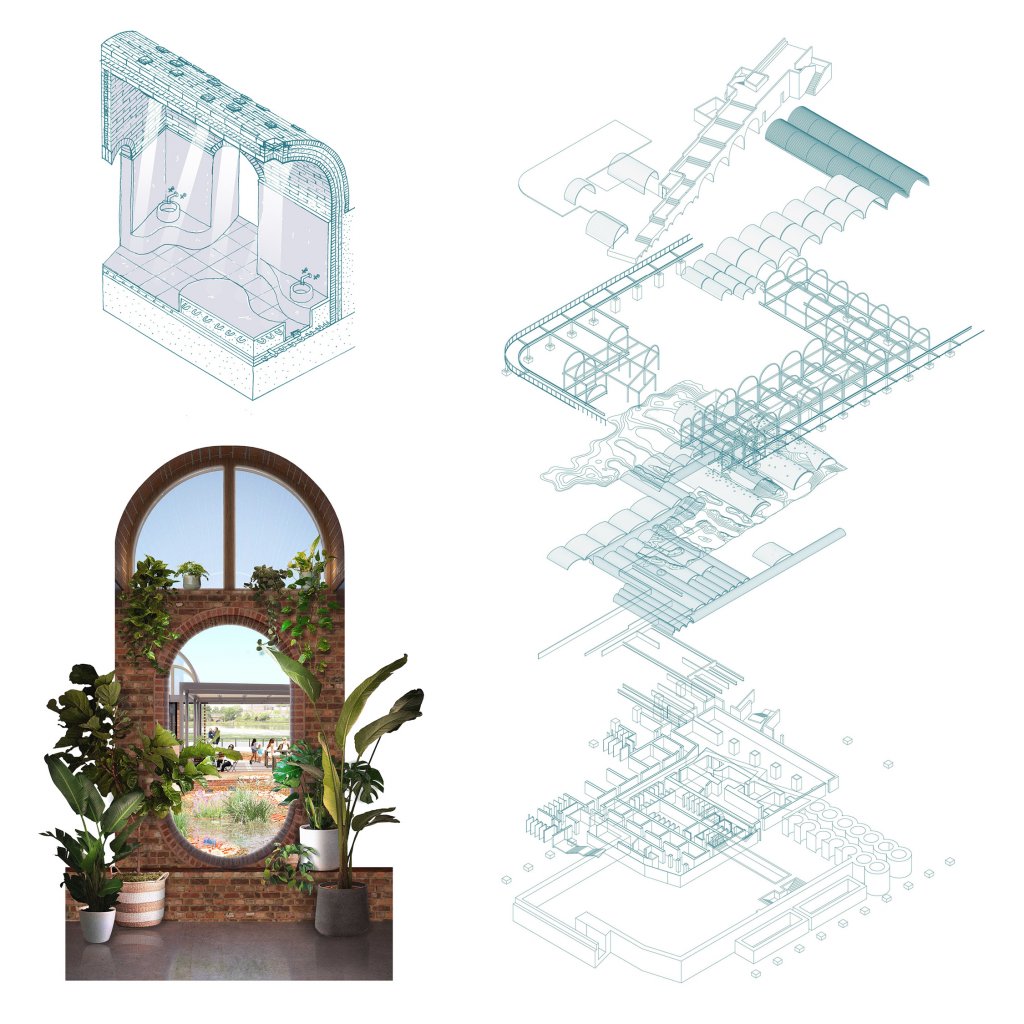Carrie Coningsby
The building proposal forms part of a wider masterplan for a community centredaround sustainable water use and awareness.
Blending landscape, infrastructure, building and hydrological processes, the scheme aims to reposition public opinion ofwastewater treatment by inserting it into the core of a public space and allowing people to experience the regenerativeproperties of treated water.
Located in London, South East of Alexandra Park and partially submerged into the landscape of the redundant filter bedsat Hornsey Water Treatment Works. The building proposal forms part of a wider masterplan for a community centredaround sustainable water use and awareness. An underground thermal spa forms the heart of the proposal, providing aspace that promotes health, well-being and positive relationships to water. All of the grey water produced by the spa isprocessed and reused on site, using a living, non-chemical, wastewater treatment system that creates a closedhydrological loop with the adjacent water works.


At ground level a landscape of shallow pools, lagoons, water channels and features provides a cooling play space forfamilies in summer and in the cooler months acts as an extension of Alexandra park. Water from the play pools ispumped into a secondary landscape of hydrobotanic regeneration ponds that filters the water through natural processes.



A hydrological design hypothesis based on the research and testing emerged as the project progressed with the followingkey objectives:
1. Using water in closed cycles
2. Celebrating free drinking and recreational water in the urban environment
3. Seamlessly blending landscape, infrastructure, building and hydrological processes.
Author: Carrie Coningsby.
Location: London, United Kingdom.
University: The Bartlett School of Architecture.
Year: 2020








